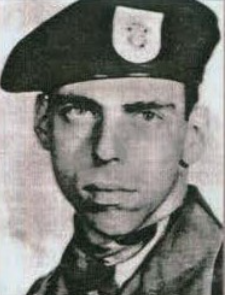Lee Delton Scurlock, Jr.

Rank/Branch: E6/US Army Special Forces
Unit: Command & Control Detachment, MACV-SOG
Date of Birth: 10 November 1943 (Cleveland OH)
Home City of Record: Restful Lake OH
Date of Loss: 21 December 1967
Country of Loss: Laos
Loss Coordinates: 143327N 1071713E (YB464105)
Status (in 1973): Missing in Action
Category: 2
Aircraft/Vehicle/Ground: Helicopter
Refno: 0944
Other Personnel in Incident: (none missing)
Source: Compiled by Homecoming II Project 01 September 1990 from one or more of the following: raw data from U.S. Government agency sources, correspondence with POW/MIA families, published sources, interviews. Updated by the P.O.W. NETWORK 2020.
REMARKS:
SYNOPSIS: MACV-SOG (Military Assistance Command, Vietnam Studies and Observation Group) was a joint-service unconventional warfare task force engaged in highly classified operations throughout Southeast Asia. The 5th Special Forces channeled personnel into MACV-SOG (although it was not a Special Forces group) through Special Operations Augmentation (SOA), which provided their “cover” while under secret orders to MACV-SOG. The teams performed deep penetration missions of strategic reconnaissance and interdiction into Laos and Cambodia which were called, depending on the time frame, “Shining Brass” or “Prairie Fire” missions.
SSGT Lee D. Scurlock, Jr. was the radio operator for a MACV-SOG reconnaissance team of C & C Detachment which was inserted into Laos on December 21, 1967. The mission went smoothly until the second day when the team split up to investigate a hut. Enemy contact was made by both groups and an immediate extraction was made.
One element of the team was extracted with no problems. However, the remainder of the team was forced to use rope ladders. The helicopter attempting the extraction of the second element was from the 199th Aviation Company and went by call sign “Gator 376.” SSGT Scurlock made one attempt to climb the ladder but lost his grip. He jettisoned the radio and his rucksack and again attempted to climb the ladder.
During the second attempt, the helicopter was taking fire and the aircraft commander had cleared the area with the team member still on the ladder. The men inside the helicopter were trying their best to help Scurlock into the helicopter, but when he almost reached the helicopter skid, two shots were heard. His facial expression changed and he fell from the ladder. The helicopter was at this time flying at an altitude of 50-75 feet above the ground.
The helicopter returned to its operational base where the commander ordered a recovery effort. The team returned to the landing zone (which was located near the border of Cambodia in Attopeu Province, Laos), but could not find SSGT Scurlock. The team did see a body some distance away and tried to get into that area, but were driven off by hostile fire. The following day, the area was aerially searched, but no body could be found.
For every insertion like Scurlock’s that was detected and stopped, dozens of other commando teams safely slipped past NVA lines to strike a wide range of targets and collect vital information. The number of MACV-SOG missions conducted with Special Forces reconnaissance teams into Laos and Cambodia was 452 in 1969. It was the most sustained American campaign of raiding, sabotage and intelligence gathering waged on foreign soil in U.S. military history. MACV-SOG’s teams earned a global reputation as one of the most combat-effective, deep-penetration forces ever raised.

